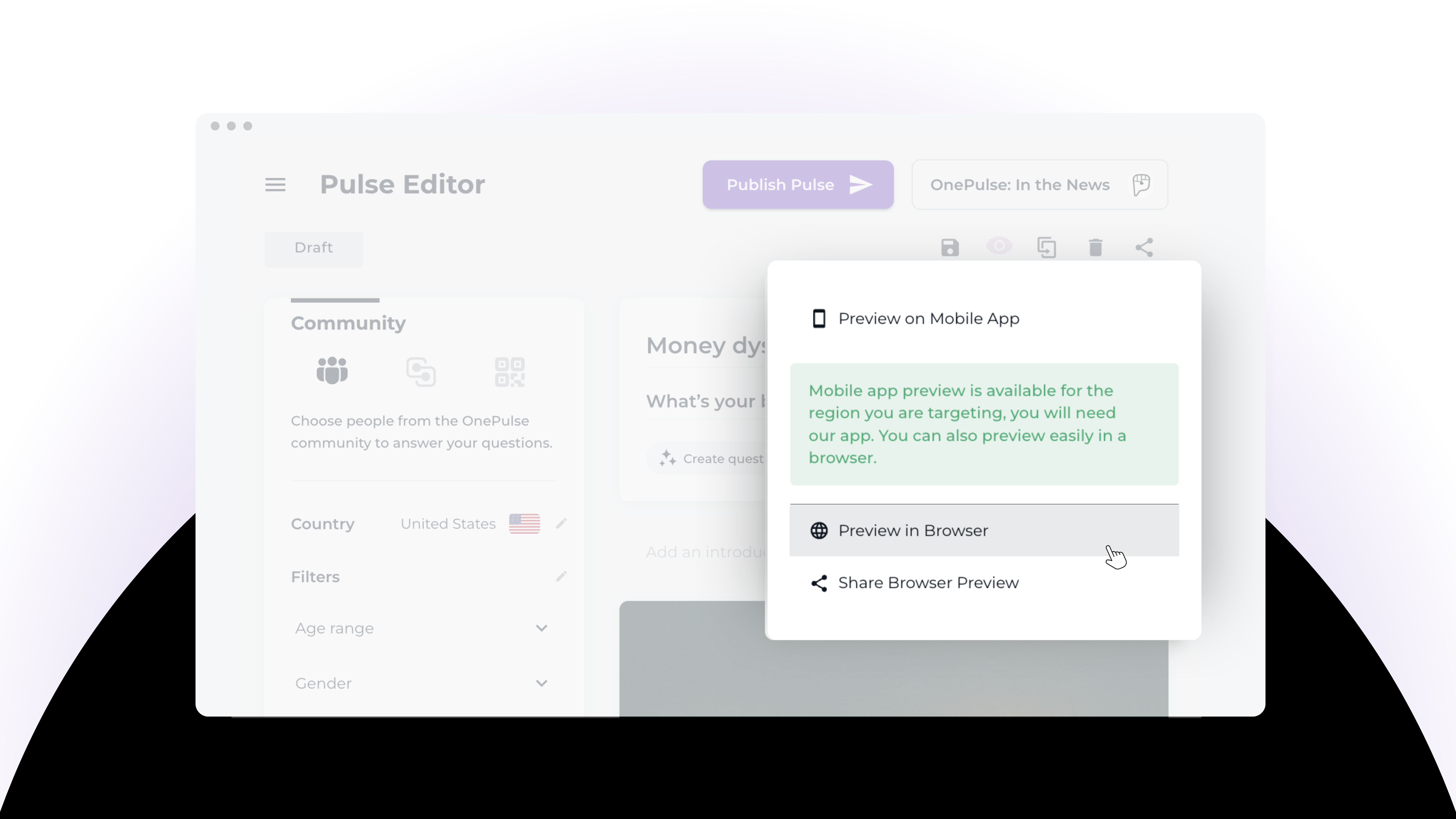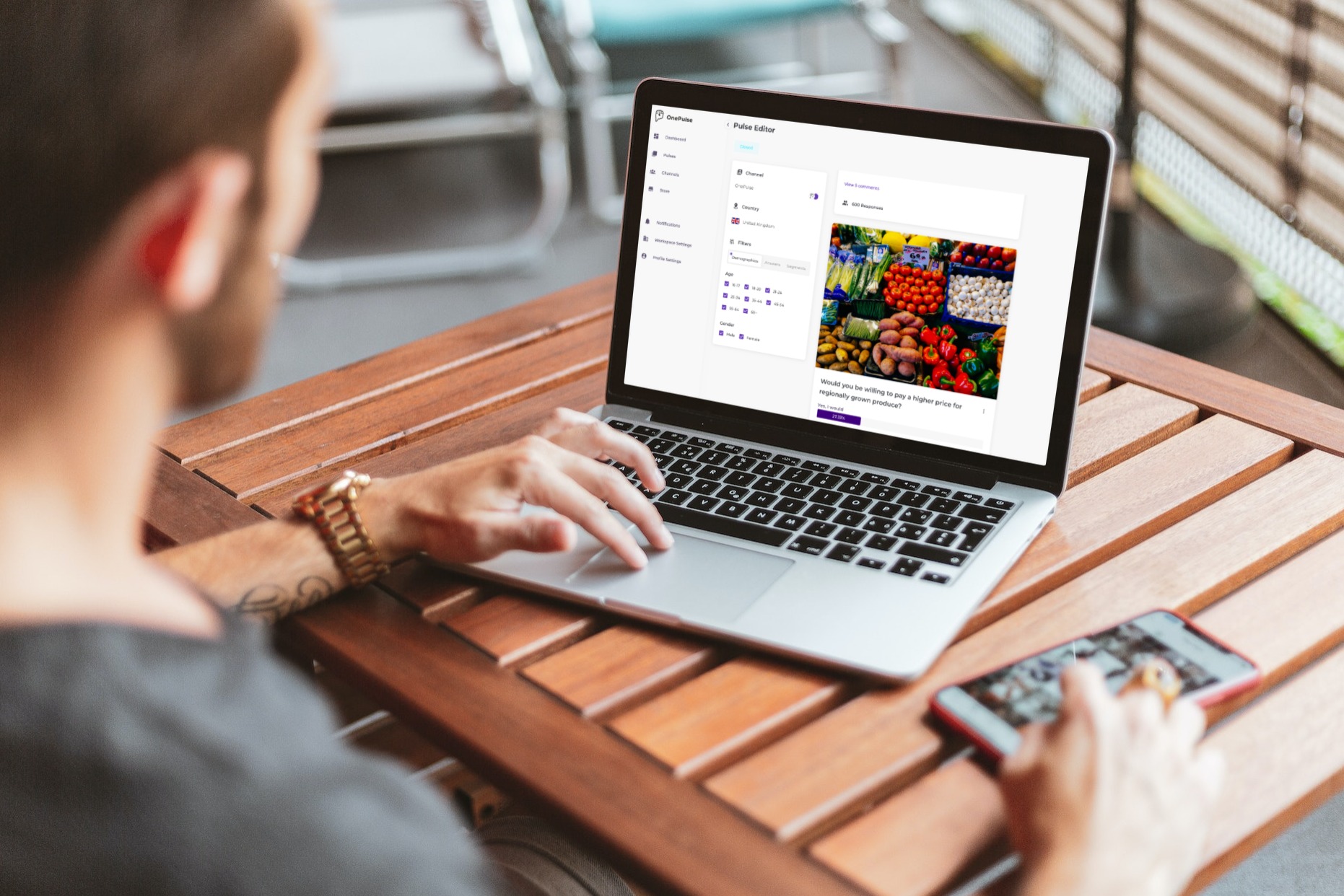How to Build a Branding Questionnaire: 10+ Questions to Ask
[…]

Developing Your Brand Identity with Agile Research
When you see the glorious golden arches on a long stretch of highway, you know you’re just an exit away from a BigMac. You also know to expect fast and reliable food thanks to the past 80 years McDonald’s has spent building its brand identity.
But what’s a new brand need to do to build its identity? You may know what you want your brand to represent but are struggling to figure out how to put that into words, visuals, or just a general style. In this post, we’ll show you how to build a branding questionnaire to overcome those challenges.
Recommended: Creative Testing Best Practices
Why Branding Matters
When we talk about branding, a lot of people think about visual identity. What colors work best for the brand? What’s the typeface, and how should I use the logo? But, branding goes beyond visuals. Your branding is about the overall impression you leave with the consumer.
Branding can encompass visuals, messaging, tone and experience. The experience of unboxing an iPhone or walking into an Apple store is as much a part of the company’s brand as its iconic Apple logo. Let’s look at how great branding can lead to better business results.
Better Differentiation
Branding can help you stand out from the crowd. This is crucial for consumer packaged goods. If someone is searching the shelves of the supermarket, you need a way to make sure they’ll reach for your product over your competitors. A unique brand helps. A strong visual identity will help distinguish your packaging from the others, while a reputation for quality can also influence consumers’ buying decisions.
Higher Price Points
Stronger brands can charge higher prices. If there’s nothing to make your brand stand out, a buyer will probably look for the cheapest solution. They’ll buy a generic store brand. Building a strong brand identity can help convince cost-conscious consumers to try your product even if it costs a bit more.
Stronger Customer Loyalty
Buyers develop relationships with the brands they like. Anyone who’s ever praised an Android phone in front of an iPhone user can attest to that. Your brand is how your buyers will know you, so it’s the first and most important step in establishing customer loyalty.
Improved Advertising Responses
Strong branding also can improve your advertising and marketing campaigns. Bland branding leads to boring ads. Solid branding doesn’t just help you stand out on the shelves. It also helps you break through the clutter of people’s social feeds.
How a Branding Questionnaire Helps
A branding questionnaire helps you nail down the personality of your brand. You can use the research from a branding questionnaire to make decisions about your brand’s:
Types of Branding Questionnaire Questions
Let’s explore some greeting branding questionnaire ideas by looking at some examples of the types of questions you’d ask if you were trying to launch a new brand of oat milk called OATMAGIC.
1. Brand Personality and Values Questions
Like people, brands have traits that influence how we think and feel about them. A company’s brand personality is supposed to elicit an emotional response. These feelings play a huge role in building brand loyalty and equity. It’s often the difference between a strong and weak brand.
People are more likely to buy from brands that share their point of view.
To help decide personality and values, you need to know what impression your brand leaves with your target audience. For example, why do people drink alternative or plant-based milks? If it’s for the health benefits, you’ll want to build a brand around a healthy lifestyle. If it’s for environmental reasons, you’d build a brand that is more eco-conscious.
With these results, we can determine that oat milk drinkers are more health conscious and want to avoid lactose. Therefore, the OATMAGIC should emphasize wellness within its branding.
2. Ideal Audience Questions
In addition to learning about your market’s preferences, you need to understand the habits and motivations of your ideal customers.
From this survey, we now know who is most likely to purchase or consume OATMAGIC: kids, teens and young adults. Within our marketing, we should emphasize how it can be used during breakfast time.
3. Unique Selling Proposition
How do you make your brand stand out? For example, if your values questions reveal that people drink alternative milk for the health benefits, you might want to learn more about the attitudes around health. Could you build a brand around being the most satisfying alternative milk on the market, while still having a fun personality?
Now that we know consumers think almond milk is the healthiest alternative milk available, we know what we are up against. This impacts the language used to describe OATMAGIC and can even be a source of inspiration for a whole marketing campaign.
4. Competitive Info
Part of building a brand is understanding where you fit with existing competitors and where you could make your mark. You might want to consider asking specific questions about what consumers think about your leading competitors compared to your brand.
It looks like consumers are slightly more interested in trying OATMAGIC over Silk’s “combination” milk. The market interest is there – now it’s time to build brand awareness.
5. Visual Identity
Visuals influence what people think about your brand and product. Use your branding questionnaire to ask about colors, fonts, and imagery.
Visual questions can help inspire brand identity and package design.
In general, consumers have a positive impression OATMAGIC’s branding and packaging. This validation is exactly throughout your product prototyping stage. As you develop design concepts, agile research makes it easy to get feedback as you iterate and optimize.
What Branding Questions Should I Ask?
Branding questionnaires can help when launching a new product or brand. But they’re also useful when going through a brand refresh. Brands do go stale. It’s important to keep a pulse on your brand health and if it’s time to update your branding. Being intentionally vintage is cool. When creating a branding questionnaire, consider asking some of the following questions:
Brand Awareness and Familiarity Questions:
- Which of the following brands have you heard of?
- When you think of {product category}, what brands come to mind?
- When was the last time you used (product category or type)?
- What is the first brand you think of when you want to _____?
- How did you find out about (brand name)?
Brand Association Questions
- What makes (brand name) stand out compared to other brands?
- If you had to describe our brand in three words, what would they be?
- What are some positive/negative words you would use to describe ______?
- Which of the following (phrases, words, feelings, colors, etc) do you associate with (brand name)?
Brand Preference and Usage
- How long have you (known about, used) (brand name)?
- When was the first time you purchased something from (brand name)?
- What was the first thing you purchased from (brand name)?
- Why did you decide to buy from (brand name)?
- Which of the following would be the main reason for switching to ______?
Build Your Branding Questionnaire With OnePulse
OnePulse makes it easy to build and collect responses to a branding questionnaire. Our app keeps respondents engaged, so you can get responses in as little as 15 minutes. Research doesn’t have to be complicated or time-consuming. Send a short pulse and get a quick gut check on if your branding is going in the right direction. Sign up for an account today.
Related posts








